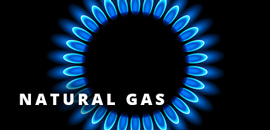PROGRESS REPORT
For fiscal years 2012-24, the agency achieved its goal of keeping total energy usage at least 5 percent less than the 2008 baseline. As part of the agency's strategic plan implementation, a workgroup evaluated multiple components of the facility and made recommendations for future improvements. A tracking system for repairs and improvements was also created. During fiscal year 2017, additional single pane windows were replaced with double pane insulated windows along the south wall of the building. The entire roof of the building was replaced with a more insulated and durable material during the fourth quarter of 2017. Additional exterior and interior spot lights and can lights were replaced with efficient LED lighting. In fiscal year 2024, total energy consumption was again only 34 percent of the 2008 usage. Compared to fiscal year 2023, there was a 1 percent reduction. Electricity consumption was 24 percent less than the new benchmark set in fiscal year 2020.
GOALS
The agency's number one goal is to determine and implement all cost-effective energy and resource conservation measures that are compatible with the needs of the staff in the performance of their duties. Previously, the agency set a goal to reduce energy and resource use by 10 percent over the fiscal year 2004-09 period. In fiscal year 2010, executive management reviewed the agency resource usage history and set a new goal of a 5 percent reduction from a fiscal year 2008 baseline during the fiscal year 2010-12 period. By the end of fiscal year 2012, the agency had achieved its goal of keeping total energy usage 5 percent below the baseline, and the agency goal for fiscal year 2023-24 was to maintain at least a 5 percent reduction from the 2008 baseline. Looking ahead to fiscal year 2025-26, the agency goal will be to maintain a 20 percent reduction in energy from the 2008 baseline. The agency will also try to establish a new baseline goal of reducing electricity consumption by 5 percent from the fiscal year 2020 total. Based on the 2022 energy audit, the agency has about reached its most feasible energy conservation point. Fiscal year 2022 total energy was only 49 percent of the baseline 2008 energy consumption. Fiscal year 2023 total energy consumption was 30 percent less than fiscal year 2022, even with enduring an historic heat wave in the summer months. Compared to the baseline of 2008 energy consumption, the agency only used 34 percent of the total. The agency will use a new benchmark year for electrity consumption of ficalyear 2020, and during fiscal year 2023, electrity usage was 20 percent less which is remarkable given the extremely hot weather in 2023. In fiscal year 2024, total energy consumption was again only 34 percent of the 2008 usage. Compared to fiscal year 2023, there was a 1 percent reduction. Electricity consumption was 24 percent less than the new benchmark set in fiscal year 2020.
The agency's second goal is to develop and implement effective utility conservation staff awareness. In order to achieve savings, and to recognize additional opportunities for energy conservation, each staff person must be made aware and informed of how they can help and understand the advantage of their individual participation.
The agency's third goal is to develop and implement a utility consumption and cost tracking system.
| Utility | Target Year | Benchmark Year | Percentage Goal |
|---|---|---|---|
| Water | 2024 | 2008 | 20 |
| Electricity | 2024 | 2020 | 20 |
| Transportation Fuels | 2024 | 2024 | 0 |
| Natural Gas | 2024 | 2008 | 20 |
STRATEGY FOR ACHIEVING GOALS
In order to decrease energy and resource consumption by 5 percent, the following energy saving and resource reduction measures will be implemented:
- Track the energy usage after installation of new fluorescent lights and ballasts (high efficiency F-32 T-8 system). We anticipate an annual reduction in lighting power consumption of 15 to 20 percent.
- Track energy savings after replacement of 70 percent of agency windows with double-pane windows and installation of window film in several offices. In addition, all windows were re-sealed in fiscal year 2008.
- At the end of the workday, turn off all computers or have all computers go into system standby.
- Track the energy usage after replacement of CRT screens with flat screen monitors for a ll workstations in agency. We anticipate a 30 percent reduction in monitor power consumption.
- Track water usage after revising landscape watering schedule to comply with City of Austin restriction and monitoring rain amounts. We anticipate a 20 percent reduction in water consumption.
- The agency arranged an energy audit through the State Energy Conservation Office (SECO) with Texas Energy Engineering Services. Meetings, initial inspection, and report was completed in fiscal year 2008.
- The agency requested quotes for a long-term plan to complete replacement of agency windows with double-pane windows.
- The agency replaced original flex duct from main trunk ducts to registers throughout the building and replaced all rooftop HVAC units with new, more efficient units at the end of first quarter 2012.
- Use the new HVAC system to maintain a constant temperature throughout the building and program the system to run less during unoccupied hours.
- The agency replaced the roof of the entire building with a new insulated roofing system in December 2017.
- The agency arranged two energy audits through SECO with Texas Energy Engineering Services. Meetings, initial inspection, and report was completed in fiscal year 2022.
IMPLEMENTATION SCHEDULE
The following actions and schedule will be used:
- Continue to monitor operations that affect energy and resource use and make recommended changes as needed.
- Continue to determine equipment needs that will improve energy efficiency and resource utilization, and recommend an implementation schedule based upon financial resources as needed.
Monitoring Strategy:
- The monthly costs and use of electricity, gas and water will be checked a n n u a l l y and compared to the base year of fiscal year 2008 to determine if progress is being made to meet planned efficiencies.
- Electricity usage will be compared to fiscal year 2020 with efforts to reduce consumption. It must be noted that while usage rates may drop due to efficiencies and improvements, overall costs may increase due to rising energy costs. Costs and usage rates are tracked by the agency. A team of agency staff evaluated all components of the facility to create a tracking system of all repairs and to recommend future improvements to the facility.
AGENCY FINANCE STRATEGY
The primary financing for the identification and implementation of energy conservation measures will be through inclusion in the yearly budget. Since the agency is part of the Self-Directed Semi-Independent project, the agency is tasked with operating like a business. All reductions in energy and resource consumption will positively affect the operations and budget of the agency. Energy consumption will continue to be tracked monthly.
EMPLOYEE AWARENESS PLAN
The agency will include both direct and indirect awareness in the development of its Utility Awareness Plan. We support the efforts of SECO regarding energy efficiency awareness. The intent of direct awareness activities is to bring about an appropriate culture change whereby informed staff not only act in prescribed ways to conserve energy, but also become encouraged and facilitated to be proactive in their own ongoing discovery of new energy and resource conservation opportunities. Various means to foster and reward this incentive will be explored, including appropriate forms of recognition. In addition to utility awareness, the agency also has implemented a recycling program. During fiscal year 2009, the agency began utilizing single-stream recycling, encouraging staff to recycle all metals, plastic or glass. In addition, the agency recycles all used paper products.





